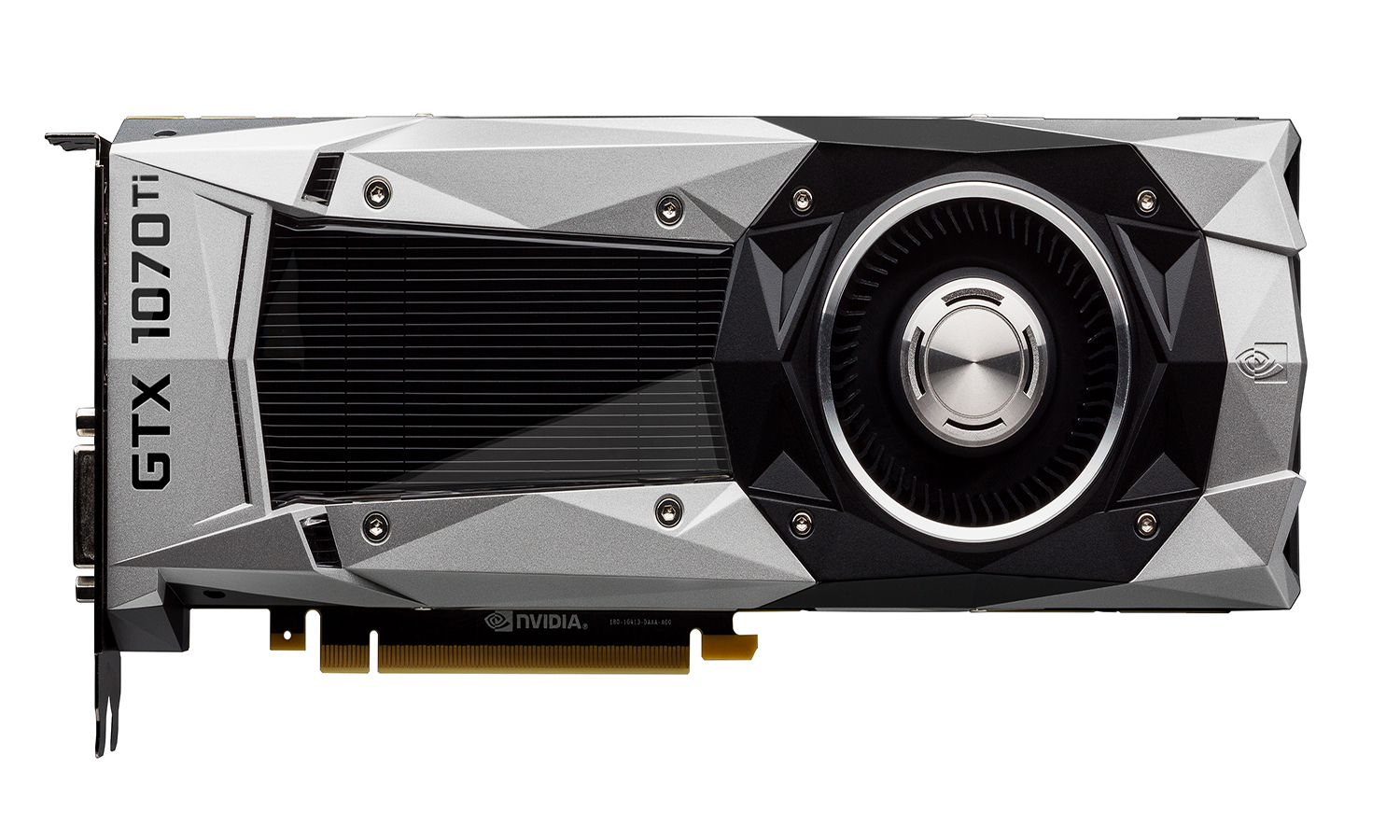Nvidia 1070Ti Graphics: Everything You Need to Know
A half-step between the GTX 1070 and GTX 1080 GPU, the Nvidia GeForce GTX 1070Ti takes a lot of cues from the latter in an effort to stave off AMD's growing stable of cards.

Nvidia's at it again. Just when I thought the chip maker had released every possible GPU for the Pascal generation, it's proven me so very wrong. The company has just announced its new GeForce GTX 1070Ti GPU which is available now for $449.99 for Nvidia's Founder Edition model.

A half-step between the GTX 1070 and GTX 1080 GPU, the 1070Ti takes a lot of cues from the latter in an effort to stave off AMD's growing stable of cards — particularly the Radeon RX Vega 56.
MORE: The Best Gaming Desktops Available Now
What's this 1070Ti all about?
Although it sits smack dab in the middle of the 1070 and the 1080, the 1070Ti leans closer to the latter than the former. It's got 2,432 CUDA Cores compared to 2,560 cores in the the 1080 and 1,920 in the 1070. For the uninitiated, CUDA Cores are a parallel computing platform, responsible for processing all the data that flows in and out of the GPU.
The 1070Ti has the same base clock speed as the 1080 (1,607MHz). The Founder's Edition of the 1070Ti is also architecturally similar to the 1080 as it's been equipped with the same power supply and has the same copper vapor cooling chamber.

As far as use cases go, Nvidia posits that the new GPU is tailor-made for gaming on ultrawide monitors and panels with a 2560 x 1440 resolution. Like most of the other Pascal GPUs, the 1070Ti is also VR-ready with a promise of delivering high frame rates whether you're checking out a virtual landscape or traditional gaming.
How We Tested
Our sister sites Tom's Hardware and AnandTech got their respective hands on the MSI-branded 1070Ti and the Founder's Edition. The MSI 1070Ti is exactly like the Founder Edition, except MSI used its own cooler, which does a better job at keeping the GPU at an optimal temperature, so it delivers somewhat better performance.
Sign up to get the BEST of Tom's Guide direct to your inbox.
Get instant access to breaking news, the hottest reviews, great deals and helpful tips.
Both sites ran a battery of tests on their respective cards, including running benchmarks from a number of popular games at QHD (2560 x 1440) and 4K (3840 x 2560) including Destiny 2, Doom, Rise of the Tomb Raider and Middle-Earth: Shadow of War to name a few.
So how did the 1070Ti do?
Pretty darn good. The card performed as expected, keeping a close pace most of the time with the 1080 while consistently doing better than the 1070. The 1070Ti also outperformed its direct rival, the AMD Radeon RX Vega 56 more often than not.

When the QHD Rise of the Tomb Raider test was run on Very High, the MSI 1070Ti achieved 55 frames per second (fps), topping the Vega 56's 48 fps and the 1070's 46 fps. However, it was a few frames short of matching the 1080's 59 fps. Cranking the settings to 4K saw the MSI 1070Ti fall to 39 fps which will still enough to outpace the Vega 56 (36 fps) and the 1070 (35 fps), but still missing the 1080 which notched 44 fps.

During the QHD, Very High Metro: Last Light benchmark, the MSI 1070Ti delivered an average 49 fps. That beat the Vega (47 fps) and 1070 (44 fps), but not the 1080 (52 fps). When we switched to the UHD tests on High, the MSI 1070Ti reached 61 fps while the Vega 56 and 1070 notched 56 and 55 fps respectively. Meanwhile, the 1080 achieved 65 fps.

For Destiny 2, the MSI 1070Ti yielded 70 fps at QHD on Highest while the 1070 delivered 61 fps and the 1080 hit 76 fps. At 4K on high, the MSI 1070Ti's score fell to 39 fps with the 1070 reaching 35 fps and the 1080 hitting 44 fps.

The Founder's Edition version of the 1070Ti is no slouch, producing 120 fps on the QHD Doom benchmark on Ultra. The Vega 56 and the 1070 delivered 118 and 101 fps. The 1080 scored 125 fps. On the 4K version of the test, the 1070Ti got 64 fps. The Vega 56 achieved 62 fps while the 1070 hit 53 fps and the 1080 obtained 66 fps.

When we ran the QHD Grand Theft Auto V benchmark on Very High, the 1070Ti notched 71 fps. The 1080, 1070 and Vega 56 delivered 79, 65 and 60 fps respectively. At 4K, the 1070Ti's frame rate dropped to 34 fps which is better than the 1070 and Vega 56 which scored 31 and 32 fps. However, it wasn't enough to match the 1080's 38 fps.
Bottom Line
The Nvidia GeForce 1070Ti GPU gives you performance that's comparable to a 1080 at a less expensive price. Although it's designed to work best with ultrawide monitors and QHD panels, the 1070Ti's main task is to take out the competition — the AMD Radeon Vega 56 GPU and for many of our tests it rises to the occasion. But there are a few instances where the scores are closer than Nvidia would care for.
However, in order for Nvidia to deliver that true knockout punch, it would have to drop the price between $50 and $100. Still, the GTX 1070Ti is a great choice for gamers that don't want to fork out upwards of $550 for a GTX 1080 and aren't too keen on AMD products.
Sherri L. Smith has been cranking out product reviews for Laptopmag.com since 2011. In that time, she's reviewed more than her share of laptops, tablets, smartphones and everything in between. The resident gamer and audio junkie, Sherri was previously a managing editor for Black Web 2.0 and contributed to BET.Com and Popgadget.

